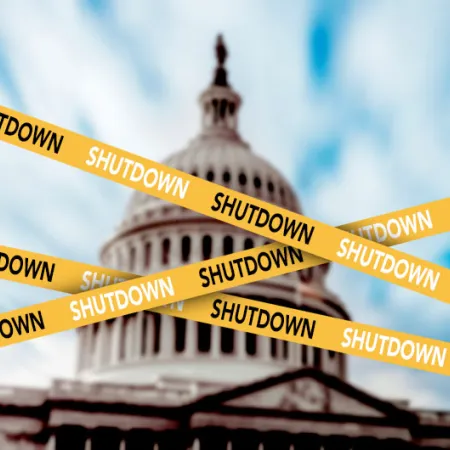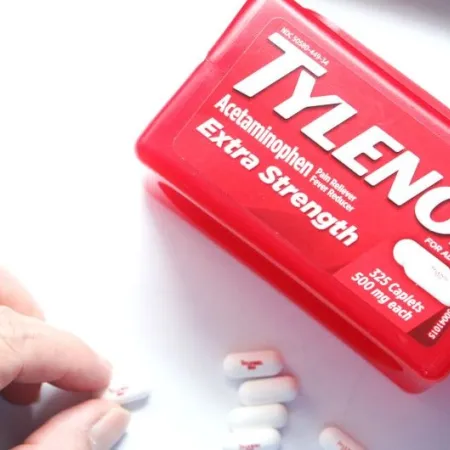SNAP’s role in nutrition: What works and what doesn’t

jetcityimage - stock.adobe.com.
In May, the Make America Healthy Again (MAHA) commission released its report assessing the state of childhood chronic diseases in the US. The report fell short of rigorous science, claimed to address the root causes of chronic disease while overlooking the role of food insecurity, and unfairly flagged the Supplemental Nutrition Assistance Program (SNAP) as contributing to poor health outcomes in children. In reality, SNAP, the largest nutrition assistance program in the country, is a powerful tool for lifting families out of poverty and reducing food insecurity, both of which are drivers of better health. SNAP can be a lever to improve nutrition security and public health, but the Trump administration seems intent on dismantling the program by slashing funding, reducing benefits, and restricting access to it.
Congress recently passed the One Big Beautiful Bill Act through the budget reconciliation process, cutting $186 billion in SNAP over the next 10 years and leaving millions of families without access to this critical food assistance program. A blow to the program of this magnitude will only serve to exacerbate food insecurity and worsen public health for years to come.
A brief history of SNAP purchase waivers
The USDA, the agency responsible for administering SNAP at the federal level, has been approving statewide waivers to remove sugary drinks and candy from the program, citing that limiting what can be purchased with SNAP will promote health. While sugar-sweetened beverages (SSBs) are the leading source of added sugars in Americans’ diets and contribute to chronic diseases, the evidence is mixed on whether restricting them from SNAP will improve diet quality.
To be clear, SNAP waivers themselves are not a problem. SNAP waivers have historically been used to support participants and administering agencies at the state level, such as by easing the burden of income reporting and by expanding eligibility during times of low employment. Most notably, waivers were used during the COVID-19 crisis to give states flexibility to adapt the program and deliver services virtually.
And in the 2008 Farm Bill, SNAP demonstration projects, also known as pilots, were authorized to gather data for exploring new strategies for promoting health and nutrition while protecting program access and benefits. The bill identified a range of pilots, but the Massachusetts Healthy Incentives Program, which provided additional financial benefits to SNAP participants for buying fruits and vegetables, is the only one that received funding. That pilot program led to increased purchases and consumption of fruits and vegetables and laid the groundwork for the USDA Gus Schumacher Nutrition Incentive Program (GusNIP).
In contrast, past attempts to obtain waivers to test restricting purchases in SNAP have been denied by USDA based on concerns about effectiveness, feasibility, and potential harm to participants. As recently as 2018, the USDA under Trump’s first administration rejected Maine’s request for a SNAP restriction waiver, stating:
When considering waiver requests, USDA focuses on moving people into self-sufficient lives, protecting the integrity of the program, and improving customer service. We don’t want to be in the business of picking winners and losers among food products in the marketplace, or in passing judgment about the relative benefits of individual food products.
But in Trump’s second term, these misgivings about SNAP restrictions seem to no longer be a concern. USDA has changed its stance and is now approving waivers for restricting certain products in SNAP. They claim this is part of the administration’s efforts to “encourage healthy eating and improved lifestyle habits” as part of President Trump’s MAHA Initiative. To date, USDA has granted waivers to six states: Arkansas, Idaho, Indiana, Iowa, Nebraska, and Utah—plus others likely forthcoming—to restrict soda and other items from SNAP purchases.
What does the evidence say?
There is limited research on the effect of restricting purchases of SSBs in SNAP on diet quality, and no high-quality studies have tested this approach among SNAP participants.
Because no waivers for restricting SNAP purchases of SSBs have been implemented, all published studies to date are controlled experiments or modeling studies. Therefore, the results cannot provide a high level of certainty as to how restrictions would impact the diets of actual SNAP participants. Among the studies that exist, the evidence is mixed. Systematic reviews indicate that restrictions could lead to a decrease in SSB purchases. Modeling studies find that restrictions could reduce consumption among children and could reduce diet-related chronic disease prevalence among adults. But randomized controlled trials conducted in 2016 and 2024 found no significant differences in diet quality among study participants who received an SSB restriction versus the control group.
The newly approved SNAP restriction waivers are unlikely to fill this evidence gap as they lack robust, transparent plans to evaluate the impact on participants’ diet and well-being. For example, the proposed evaluation plan included in Nebraska’s waiver request simply states that they will collect purchase data to determine reductions in purchases of restricted items. Unfortunately, one cannot draw conclusions about a pilot's impact on diet quality based on purchase data alone. Food purchases do not necessarily equate to subsequent food consumption; further, SNAP participants may substitute their own discretionary funds to purchase restricted items which would not be captured in an analysis of SNAP purchase data.
What SNAP participants and advocates think of restricting SSB purchases
A recent survey of SNAP participants indicates a majority do not support restrictions on sugary drinks (28.9 percent) and candy (30.4 percent), concerns that were seemingly not taken into account when USDA made the decision to approve restriction waivers. Nebraska Appleseed, a nonprofit social justice and advocacy organization based in Lincoln, NE, warned, “putting these restrictions in place will poverty-shame already stressed low-income Nebraskans and do nothing to fight the challenges facing American health. Instead of demonizing SNAP participants and policing food choice, our state should have a serious discussion about the price of food, the adequacy of SNAP benefits, and real solutions to combat poverty."
How the Trump administration can actually improve nutrition security for SNAP participants
First and foremost, this administration must ensure that SNAP provides families enough resources to support a healthy diet, and that all who need the program have access to it. The administration’s actions so far suggest that they are more interested in gutting safety net programs and taking away money people rely on to afford groceries than making people healthy.
USDA’s own study shows that SNAP participants struggle with healthy eating because food is unaffordable, not because they lack willpower or nutrition knowledge. Testing innovative approaches through waivers holds promise but needs to be done in a thoughtful way to consider impacted communities and uphold scientific rigor when evaluating the impact of these changes.
CSPI recommends the following measures to improve nutrition security through SNAP
1. Congress should undo funding cuts to SNAP
The passage of the One Big Beautiful Bill Act reduced funds across many programs, including SNAP, which limits the program’s ability to effectively serve people. The bill places financial and administrative burdens on states to administer the program, which may cause states to opt out of SNAP entirely, undermining SNAP’s role as an entitlement program in which anyone who needs it can participate.
2. USDA should cease approval of restriction-only waivers
USDA should stop approving restriction-only waivers and consider the gaps in evidence. A more effective use of time and resources would be to collaborate with states to implement pilot studies that test disincentives (a means to discourage purchases while maintaining choice) for sugary drinks paired with incentives for fruits and vegetables, as well as to implement evidence-based strategies to improve health outcomes for SNAP participants. USDA should also require states to submit comprehensive evaluation plans before approving their waiver requests.
The paired incentive and disincentive approach is not well studied, so a SNAP pilot would help fill this research gap. In surveys, SNAP participants expressed higher support for this approach as compared to restrictions only. Survey participants and stakeholders also expressed interest in strategies such as increasing SNAP benefits to better align with a healthy diet, and allowing hot foods to be purchased with SNAP benefits.
3. USDA should promote strategies that improve diet quality for SNAP participants
People who participate in SNAP nutrition incentive programs, many of which are funded by GusNIP grants, report eating more fruits and vegetables than the average US adult and others with low income.
4. USDA should reinstate programs that support healthy food access and consumption
The Local Food Purchasing Assistance and Local Food for Schools Cooperative Agreement programs helped supply produce from nearby farms to food banks, schools, and childcare facilities. SNAP-Ed is a program that was established 33 years ago to provide nutrition and physical activity education for SNAP participants. The program also employs policy, systems, and environmental approaches to drive population-level changes that support healthy eating and physical activity. This year, the Trump administration canceled funding for these programs even though they helped increase access to and consumption of healthy foods, while boosting local economies across the country.
5. The Trump administration should focus on strategies that hold industry accountable for creating a healthier food supply, not policies that limit choice for a specific population
Corporations spend more than $1 billion annually on advertising sugary drinks and target neighborhoods with more adults lacking a high school diploma. When communities challenge Big Soda’s harmful influences, companies use their considerable resources for lobbying and astroturfing (creating fake grassroots campaigns to appear like community support).
The federal government should prioritize ensuring that all Americans can access a healthy diet, and hold multi-billion-dollar companies accountable for maximizing profit at the expense of public health. This can look like creating a front-of-package warning label on items containing high levels of added sugar, such as through the FDA’s proposed rule; establishing added sugar reduction targets for packaged foods and beverages; encouraging food and beverage companies to adopt the updated “Healthy” nutrient content claim; defining “low sugars added” claims and take enforcement action to prevent misleading labeling; and issuing guidance encouraging online retailers to provide consumers with access to the same information required on food and beverage packages.
These strategies equip consumers with the information they need to make healthier choices regarding nutrients linked to diet-related diseases. The administration can also combat targeted marketing by promoting healthier retail environments, including establishing healthy placement standards through guidance for all retailers in-store and online.
The authors

Cassie Harrison-Ramos, PhD
Policy Associate

Joelle Johnson, MPH
Deputy Director for Healthy Food Access
How CSPI is fighting threats to public health
What the science says about Tylenol and autism
Fact vs. Fiction

Nutrition and food safety at risk amid government shutdown
Government Accountability

Will food safety workers be fired or lose pay during the government shutdown?
Government Accountability

Trump distorts facts on autism, Tylenol, and vaccines, scientists say
Government Accountability

Under Trump, FDA seeks to abandon expert reviews of new drugs
Government Accountability


Stirring the Pot
Join the fight for safer, healthier food
Sign up to receive action alerts and opportunities to support our work in Stirring the Pot, our monthly newsletter roundup.

